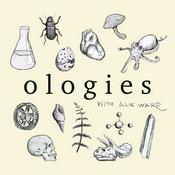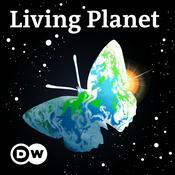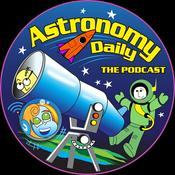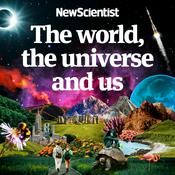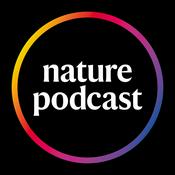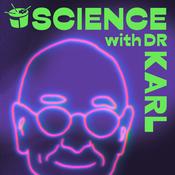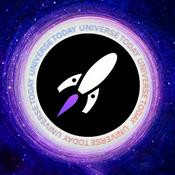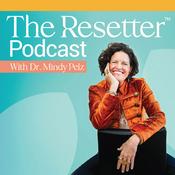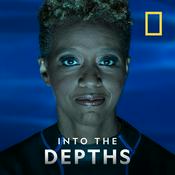160 episodes

Trapped in the icy waters of the Northwest Passage
2023/7/11 | 34 mins.
For centuries, the Northwest Passage, the long-sought sea route connecting the Atlantic and Pacific Oceans through northern Canada, was a holy grail of Arctic exploration. Even now, sailing through it isn’t guaranteed. Mark Synnott, a National Geographic Explorer, writer, and adventurer, attempted to sail his own boat through the Northwest Passage to retrace the doomed 1845 expedition of British explorer Sir John Franklin. None of the Franklin expedition’s 129 men made it home, but what exactly happened remains a mystery. For more information on this episode, visit natgeo.com/overheard. Want more? Get the inside scoop on Mark’s Northwest Passage voyage and see gorgeous photos in the August issue of National Geographic. Watch Explorer: Lost in the Arctic, premiering August 24 on National Geographic and streaming the next day on Disney+ and Hulu. And to go even deeper, Mark will tell the full story in his book Into the Ice, coming fall 2024 from Dutton, an imprint of Penguin Publishing Group. Also explore: On paper, Sir John Franklin’s expedition seemed to lack for little. There were ironclad ships, steam engines, libraries totaling 2,900 books, and even animal companions—two dogs and a monkey. Here’s how it all went wrong. Explore another polar expedition gone wrong—Shackleton’s expedition to Antarctica aboard Endurance—in the Overheard episode “What the Ice Gets, the Ice Keeps.” Learn more about your ad choices. Visit podcastchoices.com/adchoices

Playback: Modern Lives, Ancient Caves
2023/7/04 | 28 mins.
There’s a lost continent waiting to be explored, and it’s right below our feet. We’ll dig into the deep human relationship to the underground—and why we understand it from an instinctive point of view, but not so much from a physical one. (Hint: We’re afraid of the dark.) In an episode originally published November 2021, National Geographic photographer Tamara Merino will take us subterranean in Utah, Australia, and Spain, where modern-day cave dwellers teach us how to escape the heat. For more information on this episode, visit natgeo.com/overheard. Want more? Go below ground with National Geographic Explorer Tamara Merino to see how these communities have been living—quite comfortably—for a very long time. In Vietnam photojournalist and National Geographic Explorer Martin Edström created 360 images of the world’s largest cave, Son Doong. It’s so big that a forest grows inside of it. Ever zip-line to a remote island? Cartographers did, 30 miles west of San Francisco. What did they see when they mapped the hard-to-reach landform known as the Farallon Islands? Caves. China is home to some of the most intricate cave systems on the planet. These explorers used a laser scanner to capture never before seen images of undocumented caves. Also explore: South Dakota is famous among cavers for its web of cave mazes. Take a look at what they’ve found under the Black Hills. Learn more about your ad choices. Visit podcastchoices.com/adchoices

Playback: This Indigenous Practice Fights Fire with Fire
2023/6/27 | 29 mins.
For decades, the U.S. government evangelized fire suppression, most famously through Smokey Bear’s wildfire prevention campaign. But as climate change continues to exacerbate wildfire seasons and a growing body of scientific research supports using fire to fight fire, Indigenous groups in the Klamath Basin are reviving cultural burning practices that effectively controlled forest fires for centuries. In an episode originally published June 2022, National Geographic photographer Kiliii Yüyan introduces us to people bringing back this cultural practice and teaching the next generation how to use fire. For more information on this episode, visit natgeo.com/overheard. Want more? If you want to hear more from Kiliii, you can also listen to a previous Overheard episode where he shares stories from the many weeks he spent camping on sea ice with Native Alaskan whale hunters. And if you’re dying to see his photography, check out his website to see portraits of Indigenous people, Arctic wildlife, and more. Also explore: To learn more about Margo Robbins and her efforts to revive cultural burns, check out our article on the subject. The practice of cultural burning is just one of many subjects that Kiliii and writer Charles Mann covered about the ways Indigenous groups are trying to reclaim sovereignty. Read that cover story here. Learn more about your ad choices. Visit podcastchoices.com/adchoices

Playback: Rooting, from Into the Depths
2023/6/20 | 44 mins.
National Geographic Explorer Tara Roberts is inspired by the stories of the Clotilda, a ship that illegally arrived in Mobile, Alabama, in 1860, and of Africatown, created by those on the vessel—a community that still exists today. The archaeologists and divers leading the search for the Clotilda lay out the steps it took to find it. In this last episode of the Into the Depths podcast, which published in March 2022, Tara talks to the living descendants of those aboard the ship. She admires their enormous pride in knowing their ancestry, and wonders if she can trace her own ancestors back to a ship. She hires a genealogist and visits her family’s small hometown in North Carolina. The surprising results bring a sense of belonging to a place that she never could have imagined. Want more? Check out our Into the Depths hub to listen to all six episodes, learn more about Tara’s journey following Black scuba divers, find previous Nat Geo coverage on the search for slave shipwrecks, and read the March 2022 cover story. And download a tool kit for hosting an Into the Depths listening party to spark conversation and journey deeper into the material. Also explore: Dive into more of National Geographic’s coverage of the Clotilda with articles looking at scientists’ ongoing archaeological work, the story that broke the discovery of the ship, and the documentary Clotilda: Last American Slave Ship. Meet more of the descendants of the Africans trafficked to the U.S. aboard the Clotilda, and find out what they’re doing to save Mobile’s Africatown community in the face of difficult economic and environmental challenges. Read the story of Kossola, who later received the name Cudjo Lewis, in the book Barracoon: The Story of the Last “Black Cargo,” by author and anthropologist Zora Neale Hurston. Learn more about the life of abolitionist Harriet Jacobs, author of “Incidents in the Life of a Slave Girl,” who escaped Edenton, N.C., through the Maritime Underground Railroad. Learn more about your ad choices. Visit podcastchoices.com/adchoices

Playback: Ancient Orchestra
2023/6/13 | 28 mins.
Sound on! From conch shells to bone flutes, humans have been making musical instruments for tens of thousands of years. What did prehistoric music sound like? In an episode originally published in November 2021, follow us on a journey to find the oldest musical instruments and combine them into one big orchestra of human history. For more information on this episode, visit natgeo.com/overheard. Want More? A conch is more than just a musical instrument. A mollusk lives in that shell, and it’s a staple food in the Bahamas—so much so that overfishing is threatening their existence, but a few simple solutions may solve the problem. The oldest musical instrument was once thought to be a cave bear bone flute made by Neanderthals, but recent evidence suggests that the holes were made by animals rather than tools. More information about each instrument: The organization First Sounds found and brought to life the recordings of Édouard-Léon Scott de Martinville. Head to their website to learn more about that project. Bettina Joy de Guzman travels the world, composing and performing music on ancient instruments. You can read more about her work on her website. More information about the bells of Bronze Age China can be found at the Smithsonian's National Museum of Asian Art. Check out a virtual version of their collection. The conch shell sounds you heard were research recordings of the approximately 3,000-year-old Titanostrombus galeatus conch shell horn—excavated in 2018 by John Rick and a team from the UNESCO World Heritage archaeological site Chavín de Huántar, in Perú. You can read more about that research at the Chavín de Huántar Archaeological Acoustics project website. National Geographic Explorer Jahawi Bertolli is collecting the sounds of rock gongs from all over the African continent. Learn more about his rock project on Jahawi’s website. Flutist Anna Potengowski specializes in recreating the sounds of ancient flutes. You can hear more of her work on her Spotify page. Learn more about your ad choices. Visit podcastchoices.com/adchoices
More Science podcasts
Trending Science podcasts
About Overheard at National Geographic
Listen to Overheard at National Geographic, Making Sense with Sam Harris and many other podcasts from around the world with the radio.net app
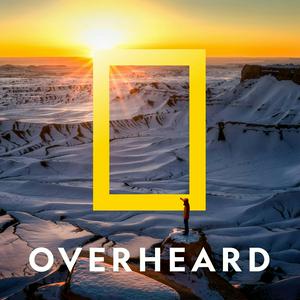
Get the free radio.net app
- Stations and podcasts to bookmark
- Stream via Wi-Fi or Bluetooth
- Supports Carplay & Android Auto
- Many other app features
Get the free radio.net app
- Stations and podcasts to bookmark
- Stream via Wi-Fi or Bluetooth
- Supports Carplay & Android Auto
- Many other app features


Overheard at National Geographic
download the app,
start listening.






